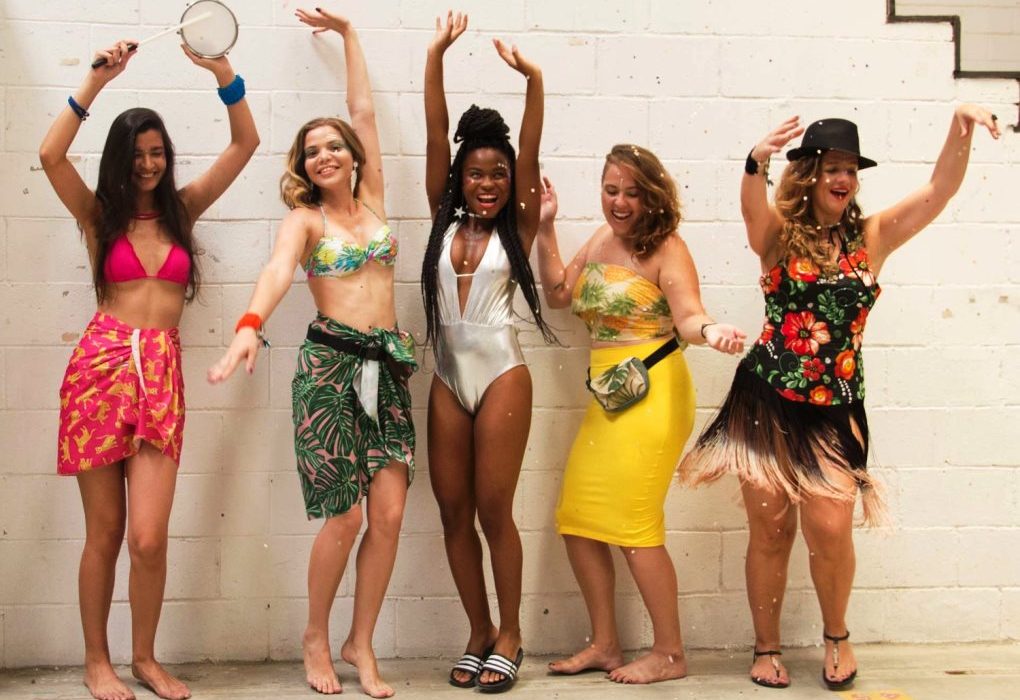In Rio de Janeiro, Brazil, the Brazilian architectural firm Tavares Duayer Arquitetura has created an innovative new space for the fashion collaborative MALHA. They wanted a sustainable space that would inspire a democratic feel and stimulate both debate and learning.
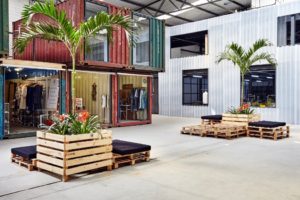 MALHA wanted an innovative environment for fashion leaders. A place where creators, entrepreneurs, producers, suppliers and consumers could all be committed to building a new way of operating in the fashion world by establishing connections among these traditionally-separated groups.
MALHA wanted an innovative environment for fashion leaders. A place where creators, entrepreneurs, producers, suppliers and consumers could all be committed to building a new way of operating in the fashion world by establishing connections among these traditionally-separated groups.
This collaborative, local, and independent space needed to be aligned with their values related to sustainability, new forms of consumption, and other environmental concerns. The physical space had to reflect this.
And what better way than to repurpose an existing building, and build-out the interior with repurposed shipping containers? A warehouse space was chosen due to its open plan space, which has an interior height of 9 meters. The warehouse used translucent tiles that allowed an unusual amount of natural light, making it perfect for the visual, color-oriented world of fashion.
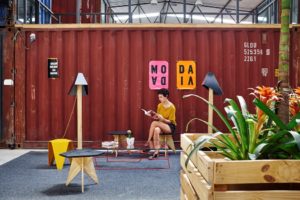 The layout comprises small offices for residents, a photographic studio, a sewing studio, showroom, natural food restaurant, shared kitchen, administrative area, as well as a multipurpose room, co-working space, and auditorium.
The layout comprises small offices for residents, a photographic studio, a sewing studio, showroom, natural food restaurant, shared kitchen, administrative area, as well as a multipurpose room, co-working space, and auditorium.
The starting point for the occupation strategy was the use of used shipping containers as the main constructive element. This allowed rapid distribution of the design program throughout the hangar, as well as quick and clean construction.
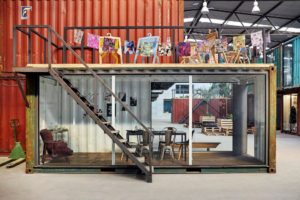 The creation of empty spaces between the forty-two repurposed containers was an important functional element in their distribution over two levels along the interior walls. The empty space allows for activities such as parades, markets, debates, and film screenings.
The creation of empty spaces between the forty-two repurposed containers was an important functional element in their distribution over two levels along the interior walls. The empty space allows for activities such as parades, markets, debates, and film screenings.
Some pallets have been spread throughout the space, serving as seating, and small plant beds have been set up which, combined with the sofas, benches, and tables, create an atmosphere that blends the ambiance of a house with that of a public space.
The photo and sewing studios and the showroom were arranged near the main entrance, while the natural food restaurant, multipurpose room/coworking space, administration room and shared kitchen are concentrated on the opposite side. There was also an open space for lectures and cinema, which consists of a kind of grandstand facing a big screen.
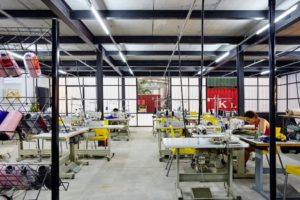 For the occupation of the interior of the containers, six different uses were proposed, among them, offices, meeting rooms, and pop-up stores. In addition to the container, materials of low environmental impact and low cost were chosen, such as plywood, metallic tiles, and translucent tiles, applied to the internal façade.
For the occupation of the interior of the containers, six different uses were proposed, among them, offices, meeting rooms, and pop-up stores. In addition to the container, materials of low environmental impact and low cost were chosen, such as plywood, metallic tiles, and translucent tiles, applied to the internal façade.
Through all these choices, the MALHA project was committed to rising to the contemporary challenges posed by architecture practices in big metropolises, such as Rio de Janeiro, which involves, among other things, exploring the potential of existing structures. This implies studying new forms of construction and new spatial mechanisms for the occupation of interiors.
The project sought to contribute some solutions to these problems. The fact that MALHA works as a public space, welcoming large numbers of people, in addition to those who work there. The strong presence of the reused containers and materials does not go unnoticed by visitors.
Featured photo at top courtesy of MALHA.
All other photos courtesy of Tavares Duayer Arquitetura.

